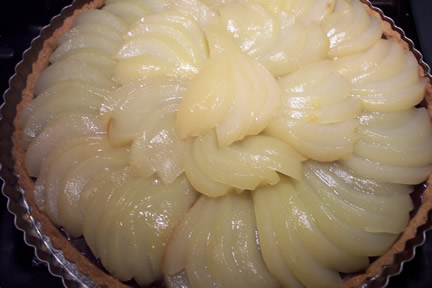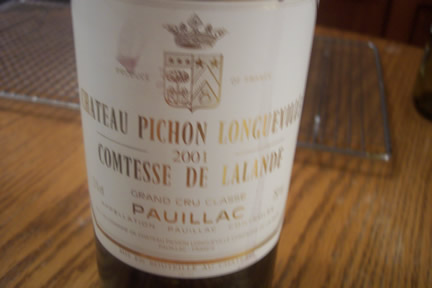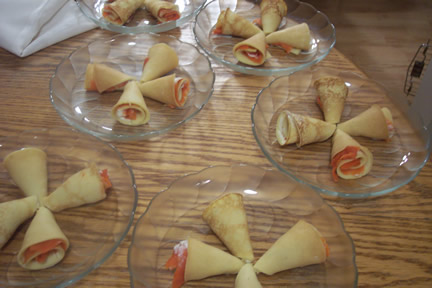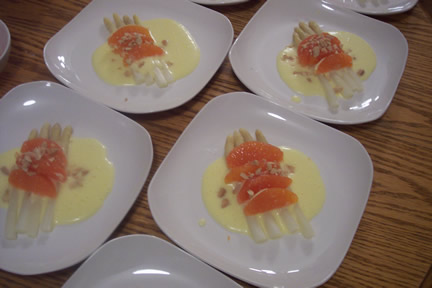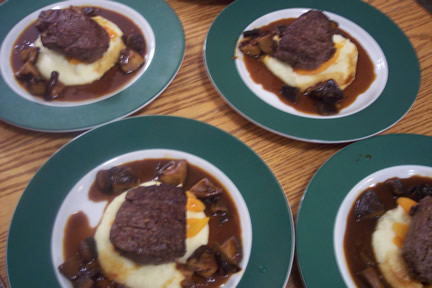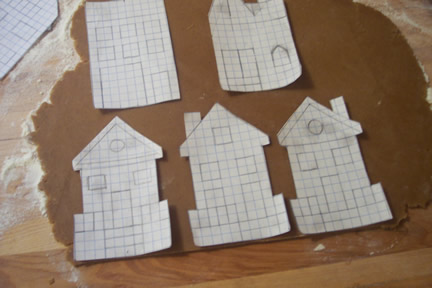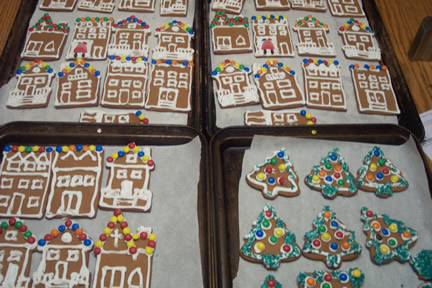The best chefs I’ve met are ones that can do two things really well:
a) have a clear vision for what the finished product will be and then go out, select the best ingredients and prepare them accordingly
b) when presented with any number of ingredients, quickly be able to determine how best to utilize them to their fullest potential and in combination
Cooks that can do both experience the complete freedom that comes with those skills. The exhilaration that comes the first time you walk into a market with nothing but some money and have a great meal determine itself is incomparable. Some people may never get excited by this, and always set out, recipe and shopping list in hand. There is nothing wrong with that approach and it usually delivers predictable results, but to truly feel in command of the craft and be confident that you will be able to make something interesting no matter what you find is something else. I liken it to the experience so many others who work with their hands express in various ways and metaphors – that it is the block of stone itself and its characteristics that determines the finished sculpture, if you will.
This approach opens the doors to a world of new ideas and infinite possibilities, so that one begins to stop following recipes and ideas they have seen and instead begins to create them easily. The intention of these scribbles is committing these principles to heart and also to provide some reference to those basics upon which all good cooking is built.
(Forgive the overdone cliché, but I’ve always been a “teach a man to fish†person myself, and believe wholeheartedly that the greatest gift you can ever share with others is the knowledge you have gained, and hopefully they will do the same.)
So where to begin? let’s talk about making food INTERESTING!
In 1989, I read “Chez Panisse Cooking” by Paul Bertolli and Alice Waters, and it really changed the course of how I felt about approaching food as a young cook. In addition to some great recipes and ideas, there are two chapters in that book, one on quality ingredients and another on making a menu that have lasted with me my whole career. My copy is well worn and full of highlighted passages and key concepts that any cook should take to heart. One that has always stuck with me is this:
“A menu that does not excite those who cook it will not excite those who eat it”
SO true, and in order to make food exciting to cook, we have to look at what makes food exciting to eat.
Food touches all of the senses. We taste, we smell, see colour and shape, feel texture and temperature, and hear sounds as we eat.
All of these elements together create a palette from which an infinite number of combinations affects you differently whenever you put food on your table. Chefs are always trying to push the senses to the limits in never before thought of ways, but the underlying principles that make food taste good are unchanged. Here are those I always go by:
Variety and diversity in textures and the elements of taste make for interesting food; avoid monotony
Contrast is as important as harmony; but avoid extremes and imbalance
Food that comes from the same place (time/season or location) usually works together
Fresh and ripe rules every time
Let’s explore this a bit more, as I walk you through the process I use to go from “what am I going to make” to a finished meal:
Step 1: Visualize
When deciding what to cook, we have to draw on what we have to work with. Working through the following will usually have you pretty close to an idea of what you want to do.
Available ingredients – what do I have, or can I get NOW!
Past experiences – what worked, what didn’t, likes, dislikes, etc
Olfactory (smell) and gustatory (taste) memory – picture how something will taste or smell in your mind
Sensory triggers – something catches your eye or a smell, a sound, the feel of a raw ingredient gets you thinking of an idea
Step 2: Flavour profile
Once you have the basic idea or main ingredients in mind, think of the flavour profile.
There are a varying number of elements to all of the things we taste depend on your cultural background, but essentially there are a handful of elements that compose all of the taste profiles found in the foods we eat. Western definitions of taste traditionally have broken everything down into 4 major elements:
Salty
Sweet
Sour
Bitter
Asian cultures have added the following to the list
Umami (literally “pleasant savory taste”)
Spiciness
Astringency
Step 3: Introduce the other senses
The other senses contribute to the overall experience in a variety of ways. Imagine if food didn’t have the following attributes, which in many cases provide our first impressions, the lasting memories, and our overall like and dislike of a certain dish or dining experience:
Temperature – both real and perceived (such as mint as a cooling sensation or spice as heat)
Colour – use a wide palette
Shape – create visual interest
Texture – some of each creates contrast
Mouthfeel – dry, fat, rich
Smells – avoid overpowering or distracting
Sound – noisy, difficult foods may spoil a mood or setting
And always try to remember a few guidelines as you go along:
Think outside the box – try new things
Too much of anything is never a good idea
Great dishes hit on multiple senses in a variety of ways
Look to classic combinations for inspiration, then make logical leaps: If flavours work together in one context they will do so in another. A great example of this is the recent trend of bringing savoury pantry items into desserts.
For a bit of fun, try this experiment I did with my co-workers to illustrate the above concepts.
Select four ingredients that each have a very distinct flavour on their own, but have different characteristics, and not things that you would normally think to put together. Try and touch as many elements as you can from the lists above.
I chose the following, based on what I found when I opened my cupboard and fridge:
Salt and vinegar potato chips (salty, sour, crispy)
Smooth peanut butter (creamy, nutty, smooth, salty, sweet)
Spicy red pepper jelly (sweet, spicy, cool)
Fresh cilantro leaves (astringent, umami, chewy)
Now, try combining them and see what “the whole” tastes like. We took a chip, spread it with the peanut butter, topped it with a thin layer of the jelly, a few fresh cilantro leaves, topped with another chip, and then ate the resulting “sandwich” all in one bite. We found that the dominant characteristic of each item disappeared and settled into a more harmonious balance that had an interesting combination of texture and flavour that was actually quite pleasant. Let me know what you tried and if you had a similar experience!
Next up: Let’s talk about ingredients!



